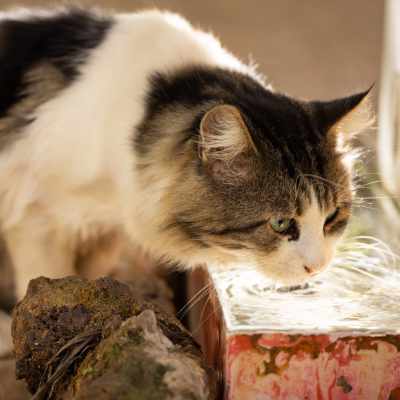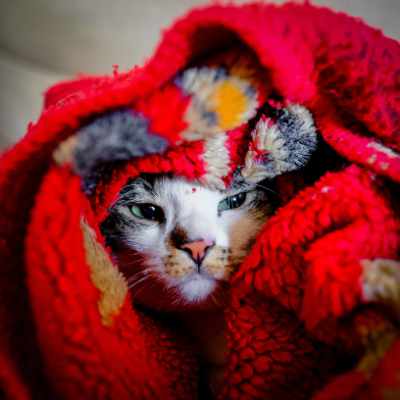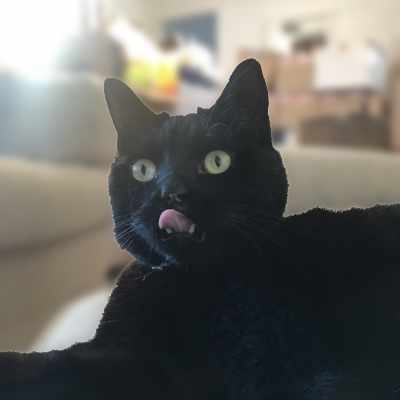Algae has become a bit of a horror phrase for animal lovers as stories circulate the news detailing how blue-green algal blooms are responsible for the death of a beloved family pet. Whilst this is obviously devastating for all those involved, it has also led to an unwarranted amount of hysteria surrounding anything to do with algae.
Blue-green algae are highly toxic and it blooms under certain conditions in nature. It’s typically found in stagnant ponds or lakes and has a nasty grey/black appearance with a foul odour. It is extremely uncommon to find this in your home.
The algae that form in your pet’s water bowl is typically a harmless, greenish-coloured species that is found in trace amounts in tap water. When allowed to sit in the sunlight, this algae grows rapidly and makes the water taste unpleasant, but is not a danger to the health of your pet. Despite being relatively harmless, algae discourage your pet from staying hydrated and can indicate that there are other things like bacteria growing in the water.
It’s always best to discard algae-tinged water and give the bowl a thorough clean with soap and warm water. Rinse the bowl well with fresh water and leave it to air dry. It’s really important that you provide your cat with an alternate source of water whilst you clean their bowl in case they get thirsty.
That’s the quick, whistle-stop tour but now let’s take a deep dive into your cat’s drinking fountain and find out why they are such a good option for your furry friend.

Why You Should Encourage Your Cat to Drink Plenty of Water
Cats are amazing creatures with a vast range of particular adaptations to aid their survival in the wild. Compared to us humans, they have extremely well-developed and intricate kidneys that can keep them hydrated even whilst hunting in the desert. Their kidneys are so well-designed that a cat can extract fresh water from a salty solution and actually hydrate themselves.
The downside of high-functioning kidneys is that small issues can end up causing a huge amount of damage. Drinking plenty of water helps flush toxins out of the kidneys and keeps them healthy and hydrated. Encouraging your cat to drink plenty of fresh water can help avoid kidney issues as they get older.
How Can a Water Fountain Help?
There are lots of ways to encourage your cat to drink more water. The first consideration is that cats naturally prefer their water source to not be next to their food. A cat in the wild would naturally be eating a carcass so having this sitting next to their fresh water is a major source of contamination.
Cats are drawn to flowing or moving water. Stagnant pools are a much higher risk of containing toxins so are best avoided. This is why a lot of cats prefer drinking from water fountains rather than water bowls. Position the fountain away from their food bowl and you have the ideal set-up for a healthy, hydrated kitty.
How to Choose the Best Fountain for Your Cat
It’s important to weigh up your cat as an individual, your budget and the quality of the fountain. Try to choose one with an in-dwelling water filter and look for good quality materials like ceramic or stainless steel.
Read the product reviews to try and avoid ones that are likely to break easily or make a loud noise whilst running. Your cat will soon let you know whether or not you’ve made a good choice. When you introduce the new fountain, it’s always best to go slowly and let them decide when they are ready to embrace it.
Why Does Algae Form?

Algae are basically just tiny aquatic plants that thrive off sunlight. They are happy to thrive in all kinds of bodies of water as long as there’s some light present. Most tap water has low levels of algae present which isn’t a health issue but can end up growing in the right conditions.
Your cats’ drinking fountain is no exception and if left long enough a slimy green layer can start to form on all parts that contact the water. It is an indication that you’re not cleaning the fountain frequently enough and can make the water taste bad, putting your cat off from wanting to drink it.
How to Clean Algae Out of the Cat Fountain
It’s always best to check the manufacturer’s instructions on cleaning your water fountain as different models may have different requirements. The usual consensus is to use warm soapy water and a soft sponge or cloth, gently wipe every part and rinse thoroughly with fresh water. Leave to air dry and then you’re good to go!
Some models are also dishwasher safe which can make clean-up even easier.
Why Have My Cat’s Drinking Habits Changed?
Dirty Water
If your cat has started to avoid the drinking fountain then the first thing to consider is how fresh the water is. Cats need their drinking water to taste as fresh as possible so if it’s been sitting out for a while then they will likely avoid it. It’s important to change your cat’s water bowl at least once a day to avoid it developing that stale taste.
Change in Diet
A change in diet can really affect your cat’s water intake throughout the day. Dry food contains around 6-10% moisture whereas wet food can be 70-85% moisture. That’s a huge difference and a lot of people report their cat drinking a lot less water if they switch from dry to wet.
Another consideration is salt levels. Some food contains more salt compared to other brands and this can also cause your cat to need to drink more water. It’s always worth checking the nutritional information on the bag and avoiding any brands that add excessive amounts of salt.
Temperature

Just as you or I end up needing to drink more on a hot day, the same goes for your cat. In summer as the temperature rises your cat will lose more water via evaporation as they cool off. If your cat seems to be drinking more than usual, consider whether or not it’s just a seasonal thing and maybe check the thermostat.
Activity Levels
A more active cat will be a thirstier cat. With more energy burned, more water needs to be available to allow the muscles to work as they should. If your cat is more active ie they’ve started going outside or they are appreciating longer evenings in summer then chances are they will need to drink more water to compensate.
Illness
It’s really important to rule out any chance of underlying illness if you notice any changes at all in your cat’s drinking habits. There are numerous illnesses that can cause your cat to either go off drinking or that can make them want to drink excessively.
Always take your cat for a check-up with your local veterinarian if you are under any doubt about their drinking habits.
The Bottom Line
Algae in your cat’s drinking fountain is a relatively harmless phenomenon but its presence can indicate that the water isn’t fresh enough to encourage your cat to drink plenty. Always throw away the dirty water and give the fountain a thorough cleaning.
If you do notice any changes in your cat’s drinking habits the first thing to do is to take them for a health check to ensure there’s no underlying issue that could be causing the change. In the end, the most important thing is that your cat stays healthy, fit and happy. Cheers to that!




